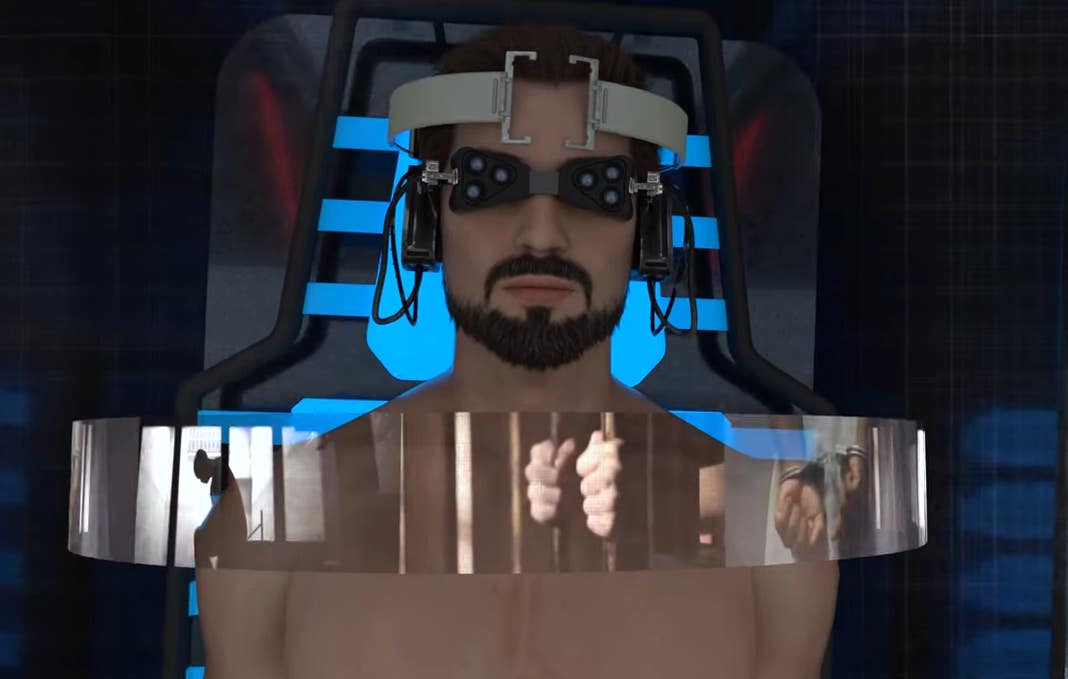AI-generated VR looks to transform prisoner rehab and the penal system
“Cognify”, a revolutionary concept for prisons, focuses on reformation and rehabilitation rather than mere punishment.

Future prison subjects could choose between serving a typical prison sentence or accepting brain implants. (CREDIT: Creative Commons)
Since 2000, the global prison population has surged by 24%, matching the general increase in the world’s population. Incarceration rates, particularly in the US and Europe, have escalated dramatically since the 1980s. In the US, rates have tripled, while in many European countries, they have nearly doubled.
Despite the intent to rehabilitate, 71% of released prisoners in the US face rearrest within five years, according to the Bureau of Justice Statistics. This statistic raises significant questions about the effectiveness of the current prison system in promoting successful reintegration into society.
Enter ‘Cognify’, a forward-thinking concept introduced by science communicator and filmmaker Hashem Al-Ghaili. This idea suggests a transformative approach to the penal system, focusing on reformation and rehabilitation rather than mere punishment.
Future prisoners might have the option to choose between serving a conventional prison sentence or receiving brain implants coupled with AI-generated virtual reality (VR) memories. These synthetic memories would be “customized depending on the crime committed and the unique brain structure and psychological profile of the individual,” enabling them to serve long sentences in just minutes.
This process would involve a thorough assessment of neural pathways and cognitive functions. By targeting specific areas of the brain responsible for criminal behavior, the implant could make offenders experience emotions like guilt and regret. Additionally, as prisoners undergo rehabilitation, computers would collect data to help researchers understand the motivations behind criminal activities.
Al-Ghaili envisions that shifting from punishment to rehabilitation could lower reoffending rates and “enable them to reintegrate into society sooner and contribute to the workforce.” While the concept might seem dystopian, it aims to revolutionize the criminal justice system by reducing traditional prison costs related to real estate, staffing, and security.
Cognify's potential lies in addressing the root causes of criminal behavior, which often stem from a mix of social, psychological, and biological factors. Traditional prison systems usually focus on punishment and isolation, which can exacerbate underlying issues and hinder reintegration into society. Conversely, Cognify offers a solution that could significantly reduce the likelihood of reoffending.
Cognify shares similarities with the ‘White Bear’ episode of the television series Black Mirror. In this episode, a woman named Victoria wakes up with no memory of her identity. It is revealed that Victoria is a criminal subjected to a daily cycle of psychological torment and memory erasure, making her relive her crimes' horror and fear perpetually.
In ‘White Bear’, the focus is on inflicting suffering as a form of justice, raising questions about the morality and humanity of such an approach. Visitors to White Bear Justice Park watch Victoria relive her punishment as entertainment, prompting viewers to consider the ethical implications of using technology for punishment.
While ‘White Bear’ depicts a highly punitive application of technology, Cognify emphasizes rehabilitation and ethical considerations. Altering an individual's brain function raises issues around personal autonomy, consent, and the potential for misuse. For such a concept to be viable, strict regulations would be essential to ensure that rehabilitation remains the primary goal.
Ensuring AI is used ethically in society will become increasingly important. Cognify presents a bold vision of a world where AI technology is used to alter criminal behavior through neural implants and virtual reality. For now, it’s crucial to consider the ethical implications and potential for abuse, allowing cautionary tales like Black Mirror to guide the development of such technologies.
By focusing on rehabilitation through advanced neural technology, Cognify seeks to address the root causes of crime and provide a more humane alternative to traditional punitive systems. However, the ethical challenges and potential for misuse necessitate careful consideration and stringent regulations to ensure that such innovations serve society's best interests.
Global technology to enhance rehabilitation programs
Prisons around the world are using technology to enhance rehabilitation programs and improve outcomes for inmates. Here are some key ways this is being done:
- Inmates can access a variety of online courses covering basic education, vocational training, and even college-level subjects through platforms like Khan Academy and Coursera. Digital libraries offer e-books and online resources, improving literacy and general knowledge.
- VR technology creates simulated environments where inmates can practice social interactions, job interviews, and life skills in a controlled setting. VR therapy addresses issues like PTSD, anxiety, and anger management by immersing inmates in therapeutic scenarios.
- Through telemedicine, inmates consult with medical professionals remotely, ensuring timely and adequate healthcare, including mental health services. Virtual counseling sessions provide essential mental health support, helping inmates cope with incarceration stresses and prepare for reintegration.
- Video conferencing helps inmates maintain family connections and support networks, which are crucial for emotional support and successful reintegration. Email and secure messaging allow for more efficient communication with loved ones and legal representatives.
- Inmates can join online vocational training programs in fields like coding and graphic design, gaining marketable skills. Certification courses on e-learning platforms enhance their employability upon release.
- Wearable devices monitor physical health and behavior, providing data to tailor rehabilitation programs. AI and predictive analytics analyze behavioral data to prevent issues like violence or self-harm, enabling timely intervention.
- Tablets offer personalized educational content and activities tailored to individual learning paces and needs. They also provide access to games, music, and other entertainment, reducing stress and improving overall well-being.
- Digital journaling apps encourage inmates to reflect on their behavior and experiences, fostering personal growth and self-awareness. Self-improvement apps help set and track personal goals, promoting a sense of achievement and progress.
- Job placement platforms designed for ex-offenders help inmates find employment opportunities upon release. Additionally, life skills training prepares them for a successful return to society.
Note: Materials provided above by the The Brighter Side of News. Content may be edited for style and length.
Like these kind of feel good stories? Get the Brighter Side of News' newsletter.
Joshua Shavit
Science & Technology Writer | AI and Robotics Reporter
Joshua Shavit is a Los Angeles-based science and technology writer with a passion for exploring the breakthroughs shaping the future. As a contributor to The Brighter Side of News, he focuses on positive and transformative advancements in AI, technology, physics, engineering, robotics and space science. Joshua is currently working towards a Bachelor of Science in Business Administration at the University of California, Berkeley. He combines his academic background with a talent for storytelling, making complex scientific discoveries engaging and accessible. His work highlights the innovators behind the ideas, bringing readers closer to the people driving progress.



